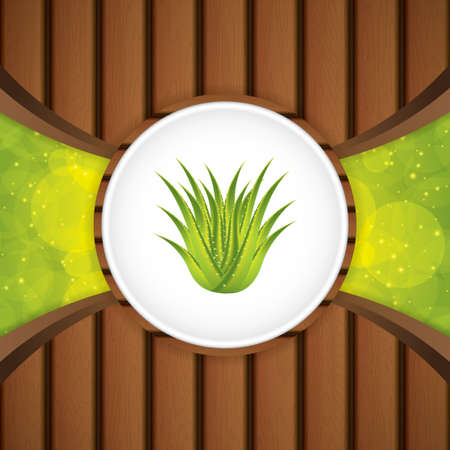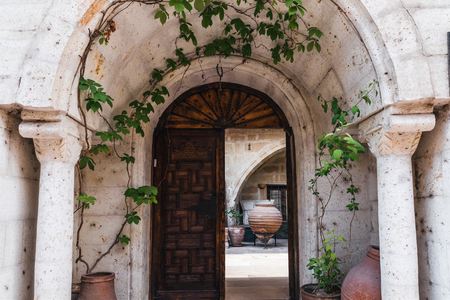Understanding Small Space Challenges in Indian Homes
Living in urban India often means making the most of limited space, especially in compact flats and houses. Typical Indian homes are characterised by multi-functional rooms, shared living spaces, and minimal balconies or window ledges. These unique constraints can make traditional gardening difficult, but they also inspire creative indoor gardening solutions. Whether you are residing in a Mumbai high-rise or a Bengaluru apartment, adapting to your home’s layout is essential for bringing greenery indoors. Consider vertical gardening options that use wall space efficiently or opt for hanging planters to avoid cluttering floors. Utilise corners, windowsills, and even kitchen shelves—every inch counts when it comes to nurturing plants in Indian homes. With a little planning and the right choice of indoor plants, you can transform even the smallest space into a refreshing green haven that suits your family’s lifestyle and cultural preferences.
Choosing Low-Maintenance Indian Plants
For small Indian homes, selecting indoor plants that are both easy to care for and suitable for the local climate is essential. Given our busy lifestyles and often limited space, it’s wise to opt for greenery that not only survives but thrives with minimal attention. Let’s explore some of the best low-maintenance indoor plants, including those that purify air and align with Vastu Shastra principles, bringing positive energy and well-being into your home.
Top Easy-Care Indoor Plants for Indian Homes
| Plant Name | Key Benefits | Care Level | Vastu/Traditional Belief |
|---|---|---|---|
| Areca Palm (Supari Pana) | Air purification; humidity control | Low | Brings peace & prosperity; best placed in East/North |
| Tulsi (Holy Basil) | Purifies air; medicinal uses | Medium | Sacred plant, invites positivity; best in North/East direction |
| Snake Plant (Mother-in-law’s Tongue) | Removes toxins (formaldehyde, benzene); oxygen at night | Very Low | Promotes health; ideal for South/East corners |
| Aloe Vera | Cleans air; medicinal gel for skin care | Very Low | Symbolizes healing & growth; best placed near sunlight windows |
| Pothos (Money Plant) | Air purifier; easy to propagate in water or soil | Very Low | BELIEVED TO ATTRACT WEALTH; keep towards North or East side |
| Peace Lily (Spathiphyllum) | Cleans air of toxins; beautiful white flowers | Low | Adds serenity and calmness; good for living rooms or bedrooms as per Vastu |
| Zamioculcas (ZZ Plant) | Tolerates low light; drought resistant | Very Low | Considered lucky and brings fortune when kept near entrance/hallway |
| Lucky Bamboo* | Grows well in water; brings positive vibes | Low | BELIEVED TO ENHANCE GOOD FORTUNE AND HARMONY, ESPECIALLY IN THE EAST DIRECTION |
*While Lucky Bamboo is not native to India, it’s popular in urban Indian homes due to its symbolism and adaptability.
Cultural Considerations: Vastu-Friendly Choices
Selecting plants according to Vastu Shastra can enhance harmony at home. For instance, Tulsi should be kept in the North or East part of the house, while Snake Plants and Money Plants are considered auspicious in Southeast areas. It’s always good to avoid thorny plants like cactus indoors as per traditional beliefs.
Quick Tips:
- Select compact pots to save floor space—hang planters or use vertical shelves for a modern touch.
- Avoid overwatering; most Indian indoor plants thrive with minimal moisture.
- If you have pets, check if a plant is non-toxic before bringing it home.
With these low-maintenance, culturally-aligned choices, even the smallest flat in Mumbai or Bengaluru can enjoy lush greenery without hassle!

3. Creative Use of Vertical and Hanging Spaces
Space is always a premium in small Indian homes, but that doesn’t mean you have to compromise on your dream of having a lush indoor garden. By thinking vertically, you can bring life to even the most compact corners.
Wall Planters: Turn Your Walls into Green Canvases
Make the most out of bare walls by installing wall planters. You can use traditional terracotta pots for an earthy touch or opt for colourful recycled plastic planters to add vibrancy, which is much loved in Indian decor. Arrange them in patterns or rows to create a striking feature wall—perfect for growing money plants (pothos), ferns, or even herbs like mint and coriander.
Hanging Pots: Utilise Ceilings and Windows
Hanging pots are ideal for city apartments with limited floor space. Hang these pots from curtain rods, balcony grills, or ceiling hooks near windows to give your plants plenty of sunlight. Macramé hangers and jute ropes add a rustic, handmade Indian touch while holding everything from spider plants to flowering creepers like Madhumalti (Rangoon Creeper).
Railing Planters: Bring Greenery to Balconies
If you’re lucky enough to have a balcony, railing planters are a must-try hack. Simply hook these planters onto balcony railings or window grills—perfect for growing chillies, tulsi (holy basil), or flowering plants like marigold and jasmine that are commonly used in Indian rituals and festivals.
Pro Tip:
Mix different sizes and types of planters for a layered look. Regularly rotate your plants so each gets enough sunlight and fresh air—a key factor in India’s humid climate. With a little creativity, every vertical inch can be transformed into a green oasis!
4. DIY Upcycled Planters Using Everyday Indian Household Items
When space is at a premium in small Indian homes, creative solutions become essential. One of the most sustainable and budget-friendly ways to introduce greenery into your living space is by upcycling everyday household items into unique planters. Not only does this reduce waste, but it also adds a touch of desi charm and personality to your indoor garden.
Popular Household Items for Upcycled Planters
Many common objects found in an Indian home can be transformed into functional and stylish plant containers. Here are some practical ideas:
| Household Item | Plant Suggestions | Tips for Use |
|---|---|---|
| Chai Cups (Kulhads or Stainless Steel) | Herbs like coriander, mint, or ajwain; small succulents | Add small pebbles at the bottom for drainage; perfect for window sills or kitchen shelves |
| Steel Containers (Dabbas, Tiffin Boxes) | Pothos, money plant, or spider plant cuttings | Punch holes at the base for drainage; use old lids as saucers to catch excess water |
| Old Plastic Buckets or Paint Cans | Larger indoor plants like snake plant or peace lily | Clean thoroughly before use; decorate with fabric scraps, jute rope, or paint for aesthetics |
| Broken Clay Pots | Cactus, aloe vera, or other hardy plants | Arrange broken pieces creatively for a rustic look; ensure sharp edges are smoothed out |
| Glass Jars (Achar jars, sauce bottles) | Basil, pudina cuttings, lucky bamboo stalks | Ideal for hydroponic setups or propagation stations on sunny countertops |
Quick Steps to Make Your Own Upcycled Planter
- Select a clean household item that fits your available space.
- If needed, make drainage holes at the base using a nail and hammer (for metal/plastic).
- Add a layer of small stones or gravel to help with drainage.
- Fill with potting soil suitable for your chosen plant.
- Plant your seeds or saplings and water lightly.
- Personalise the exterior with paints, rangoli patterns, or traditional fabrics for an ethnic touch.
Why Choose Upcycled Planters?
- Sustainable: Reduces waste and gives new life to unused items.
- Cost-effective: Saves money compared to buying new pots.
- Culturally Rooted: Reflects Indian values of jugaad (resourcefulness) and creativity.
- Customisable: Easily tailored to fit any décor style and available space in compact homes.
Pro Tip: Involve Your Family!
This is a fun weekend activity—let kids paint old dabbas or have elders share stories about the repurposed objects. With these upcycled planter ideas, even the smallest corners of your Indian home can become lush, green oases full of character and tradition.
5. Ensuring Proper Light and Water in Indian Apartments
Living in Indian apartments often means dealing with unique challenges like limited natural sunlight, varying humidity, and changing weather conditions. Here are some practical tips to help your indoor plants thrive in these settings:
Maximising Sunlight for Your Green Friends
Find the Brightest Corners
Place your plants near east or north-facing windows where they can get gentle morning light. If you have a balcony grill or window sill, use it for sun-loving species like Tulsi or Money Plant.
Use Sheer Curtains
If your apartment receives harsh afternoon sunlight, filter it using sheer curtains. This protects delicate leaves from burning while still letting enough light pass through.
Supplement with Grow Lights
For homes with minimal sunlight—common in urban areas—consider using LED grow lights. They are energy-efficient and suitable for Indian power supplies. Set timers to mimic natural day-night cycles.
Smart Watering Routines for Indian Weather
Adjust Frequency with Seasons
During hot summers (especially in cities like Chennai or Delhi), check soil moisture daily as water evaporates quickly. In the monsoon or winter, reduce watering to avoid root rot—a common problem in humid Indian homes.
Choose the Right Watering Tools
Use a spray bottle for small pots or hanging planters to prevent overwatering. For larger containers, a mug or recycled mineral water bottle works well for controlled pours.
Group Plants by Water Needs
Keep similar plants together—succulents with succulents, ferns with ferns—so it’s easier to stick to their specific watering schedules. This is especially handy when space is tight and routines need streamlining.
Pro Tip: Watch for Local Signs
If leaves droop or soil smells musty, adjust your watering immediately. India’s climate varies greatly across regions, so observe and tweak your routine according to local weather and your apartments microclimate.
Tips for Growing Edible Plants Indoors
Why Choose Indian Herbs and Vegetables?
Bringing edible greenery into your home is not just about aesthetics—it’s about convenience and freshness in your kitchen. Indian homes, especially in cities, often have limited space, but that shouldn’t stop you from growing your own pudina (mint), dhania (coriander), or chillies. These plants thrive indoors and are frequently used in Indian cooking, making them perfect choices for small apartments or flats.
Best Places to Grow Indoors
Most Indian flats have a sunny balcony or at least a kitchen window with decent sunlight. Choose these spots for placing your pots or containers. South- or east-facing windows are ideal as they receive plenty of sunlight, which is essential for edible plants to flourish. If natural light is limited, you can use affordable LED grow lights available online or in local markets.
Easy-to-Grow Edible Plants
- Pudina (Mint): Very forgiving and grows well in shallow containers. Just plant a few stems with roots in moist soil and watch it flourish.
- Dhania (Coriander): Sow seeds directly into the soil. Keep the soil slightly moist and place it in a spot with morning sun.
- Chillies: Start with seeds or young saplings from your local nursery. Chillies like warmth and sunlight, so a sunny balcony works best.
Simple Care Tips
- Watering: Water when the top layer of soil feels dry. Avoid overwatering, as most Indian herbs prefer slightly dry conditions between waterings.
- Soil: Use well-draining potting mix. You can mix regular garden soil with some cocopeat and compost for extra nutrients.
- Fertilising: Feed plants every two weeks with homemade compost or liquid fertiliser made from kitchen waste like vegetable peels.
Cultural Tips for Success
If you’re new to indoor gardening, start small—maybe a single pot of pudina on your kitchen ledge. Involve family members; kids love watching tiny seeds grow into harvestable leaves! Remember to rotate your pots every few days so all sides get sunlight equally, preventing lanky growth. With patience and care, your small Indian home can become a lush source of fresh herbs right at your fingertips, making daily meals healthier and tastier.

